Okay, I will confess: I did it again! I went again against the rules and developed once more the Adox CMS 20 film with a conventional developer (Ars Imago-Fd) instead of the dedicated one. The reasons which lead to this are widely mentioned in this post, which describes the results of my first test with this combination. As reported in the conclusions, I had promised myself to make a new test exposing for a lower speed than the nominal 20 Iso, in order to have more open shadows and to evaluate the yield of the intermediate grey tones and highlights using these new parameters. Thanks to the cooperation of Ars-Imago, I had the chance to try some other film rolls.
Therefore, this time, I exposed the CMS @ 6 Iso and then developed it with Ars Imago-Fd (1+59) for 4’45 “at about 21°C. This time I used for testing the Moskva 5 folding camera, in 6X9 format. Light metering were carried out (as in the previous case) with the Pentax Spotmeter III and in all the frames, the difference between the reading values that I have chosen to put in zone III of Z.S. and those of higher brightness in the scene, were always no more than 4/5 EV. The results (keeping in mind that these are evaluations made on scanned film) were, imho, much less convincing than in previous tests. In fact, exposing to EI 6, the shadows were still too dark, while the results of mid-tones and highlights were definitely worst. The steps between tones turned out to be more rough and less harmonious. What it should have been in zone III often ended in zone I or II and what was supposed to be in zone VII / VIII moved frequently in zone IX or X. In fact, for a paltry gain on the shadows (compared to box speed rating) you lose a lot of everything else. Except in one case, I used a yellow or orange filter (with appropriate compensation of 1 or 2 stops) The scanned images are not razor-sharp, because the scan of 6X9, when the film has a certain tendency to curl is not a simple task and my Epson V550 scanner is still a cheap one.
What will be the next steps? Definitely make a new test starting again from box speed, perhaps with half a stop opening and decrease development time. This time I didn’t want to go much below 5 minutes, because I’m always scary of uneven development (which has been the case, as you can see from the pictures) using short working times. Probably there were some air bubbles, although I tapped, as always, the tank after each inversion cicle (Continuos for first 30 ” and one inversion every 30″). In the future, maybe directly along with Ars-Imago, I will make some test print.
Regarding the camera used for testing, the Moskva 5 showed a lower resolution on the edges (compared to the previous test in 6X6) but have solved the small problems of framing and film scratching previously highlighted. Surely the 6X6 reduction mask was not 100% correctly positioned.
(Click on Images to see Larger)
—-
Versione Italiana
Va bene, lo confesso, sono andato di nuovo contro le regole ed ho sviluppato ancora una volta la pellicola Adox CMS 20 con un rivelatore convenzionale (Ars-Imago Fd) invece che con quello appositamente dedicato. I presupposti di questa scelta sono ampiamente indicati in questo post, dove sono descritti i risultati del mio primo test con questa combinazione. Come riportato nelle conclusioni, mi ero ripromesso di effettuare un nuovo test esponendo per una sensibilità più bassa rispetto a quella nominale di 20 Iso, al fine di avere una maggiore apertura delle ombre e di valutare la resa delle tonalità intermedie e delle luci usando questi nuovi parametri. Grazie alla collaborazione di Ars-Imago, ho avuto modo di poter provare qualche altro rullo di pellicola. Ho pertanto esposto la CMS a 6 Iso e l’ho poi sviluppata con Ars-Imago Fd (1+59) per 4’45” a circa 21°C. Questa volta ho usato come fotocamera per il test la Moskva 5, nel formato 6X9. Le misurazioni esposimetriche sono state effettuate (come nel caso precedente) con il Pentax Spotmeter III e in tutti i fotogrammi, la differenza tra i valori di lettura che io ho scelto di porre zona III del S.Z. e quelli di luminosità più elevata nella scena è sempre stata di 4/5 EV. I risultati (sempre tenendo conto che si tratta di valutazioni su negativi scansionati) sono stati, a mio parere, molto meno convincenti che nel precedente test. Infatti, esponendo ad una S.E. di 6 Iso, le ombre sono rimaste molto chiuse (e molto meno leggibili), mentre la resa sull’estensione tonale dei grigi e delle alte luci è risultata nettamente peggiore. I passaggi tra un tono e l’altro si sono rivelati più bruschi e meno armoniosi. Ciò che doveva essere in zona III è finito spesso in zona I o II e ciò che doveva essere in zona VII/VIII si è spostato frequentemente in zona IX o X. In realtà, per ottenere un guadagno irrisorio sulle ombre (rispetto all’esposizione nominale a 20 Iso), si perde molto su tutto il resto. Tranne che in un caso, ho usato un filtro giallo o uno arancio (con opportuna compensazione di 1 o 2 stop) Le immagini scansionate non sono nitidissime, perché scansionare il formato 6X9, quando la pellicola ha una certa tendenza all’arricciamento è sicuramente un’impresa difficile ed il mio Epson V550 è pur sempre uno scanner economico.
Quali saranno i prossimi passi? Sicuramente effettuare un nuovo test partendo dalla sensibilità nominale, magari con un mezzo stop in più e diminuire un poco il tempo di sviluppo. Questa volta non sono voluto scendere troppo sotto i 5 minuti, perché ho sempre paura di uno sviluppo irregolare (che si è puntualmente verificato, come si può vedere dalle immagini) usando tempi brevi di lavorazione. Probabilmente si sono formate delle bolle d’aria, nonostante io abbia battuto come sempre la tank dopo ogni ciclo di inversione (Inversioni per 30″ all’inizio e una inversione ogni 30″). In seguito, magari direttamente insieme ad Ars-Imago, passerò a fare qualche prova di stampa.
Riguardo alla fotocamera usata per il test, la Moskva 5 ha evidenziato una minore resa ai bordi (rispetto al test precedente in 6X6) ma si sono risolti i piccoli problemi d’inquadratura e di rigatura dei fotogrammi evidenziati precedentemente. Sicuramente la mascherina di riduzione non era posizionata correttamente al 100%.
Tech Data:
Camera: Moskva 5 – Film: Adox CMS 20 – Developer: Ars Imago Fd – Manfrotto Tripod – Scanner: Epscon V550
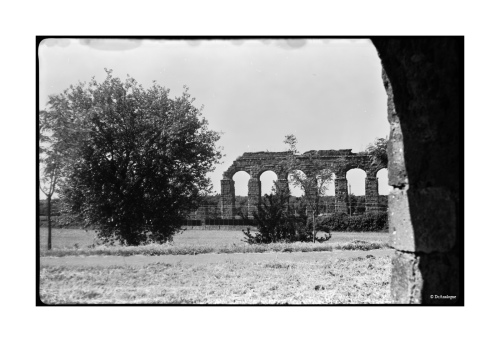
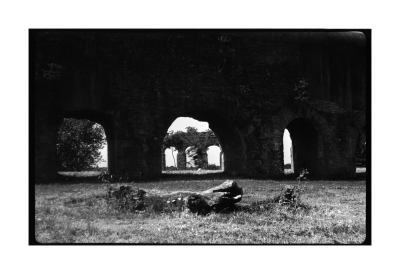
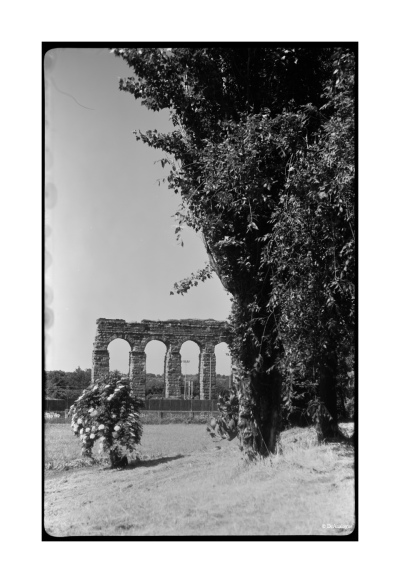
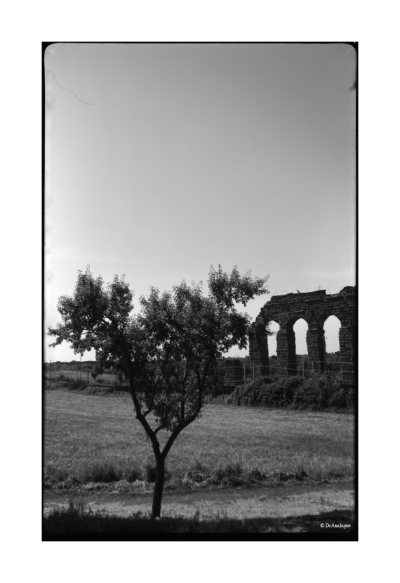
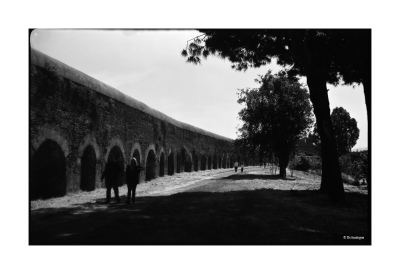
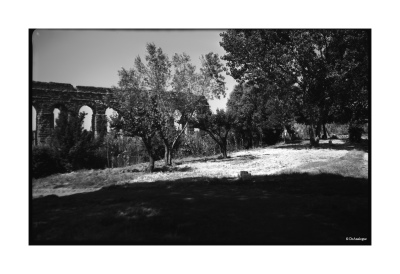
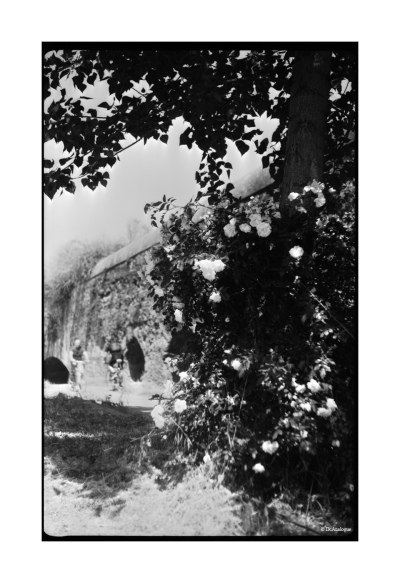
Lo sviluppo che hai scelto crea una curva della pellicola troppo esponenziale….trovane uno che la formi più lineare possibile…
LikeLiked by 1 person
In effetti… stavo solo facendo delle prove, anche se la prima (citata nel post) non era andata poi così male. In seguito ho sviluppato un rullo che mi era rimasto (e che ho usato con la Holga pinhole) con l’FX39 ed i risultati sono stati sicuramente migliori. https://thefilmrenaissance.wordpress.com/2016/01/25/pinhole-holga-120-wpc-plus-adox-cms-20-in-fx-39/
LikeLike